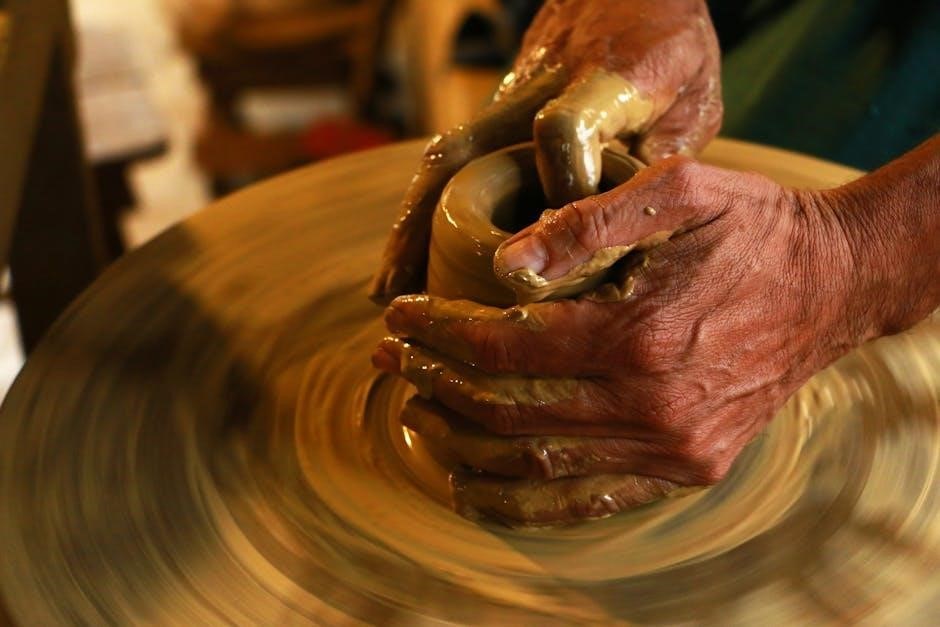Cub Cadet ST 100 Manual: A Comprehensive Guide
Unlock the full potential of your Cub Cadet ST 100 with this comprehensive user guide. It contains step-by-step instructions and expert tips for optimal use. This guide covers safe practices and procedures. It has maintenance and troubleshooting advice.

Safe Operation Practices
Prioritize safety when operating the Cub Cadet ST 100. Carefully read and understand all safety rules and instructions in the operator’s manual before use. Always wear appropriate personal protective equipment, including eye protection, hearing protection, sturdy footwear, and long pants. Clear the work area of any debris, such as rocks, toys, and wire, that could be thrown by the string trimmer.

Maintain a safe distance from bystanders and pets while the trimmer is in operation. Never allow children or untrained individuals to operate the equipment. Inspect the trimmer before each use for any damage or loose parts. Ensure that all guards and shields are properly in place and functioning correctly. Do not operate the trimmer if it is damaged or malfunctioning.
Be aware of your surroundings and maintain a firm grip on the trimmer handles. Use the trimmer only in well-ventilated areas to avoid exposure to harmful exhaust fumes. Avoid operating the trimmer in wet or slippery conditions. Stop the engine and disconnect the spark plug wire before performing any maintenance or repairs. Store the trimmer in a safe and secure location, away from children and flammable materials.
Set-Up Instructions
Before operating your Cub Cadet ST 100, proper set-up is crucial. Begin by carefully unpacking all components from the box, ensuring all listed parts are present. Consult the parts list in the manual to verify inventory. Next, attach the handle assembly securely to the trimmer head, following the specific instructions provided. Tighten all bolts and fasteners to the recommended torque specifications.
Add the appropriate amount of fuel and oil. Use the recommended type and ratio as outlined in the manual. Check all fluid levels before starting the engine. Connect the spark plug wire to the spark plug, ensuring a secure connection. Inspect the trimmer head and string for any damage or wear. Replace the string if necessary, following the string replacement instructions in the manual.
Adjust the cutting height to your desired level. Familiarize yourself with the location and function of all controls. This includes the power switch, throttle, and choke. Perform a pre-start check to ensure all components are properly assembled and functioning. Refer to the troubleshooting section of the manual if you encounter any difficulties during the setup process. Following these steps will ensure your Cub Cadet ST 100 is ready for optimal performance.
Operating Procedures
To start your Cub Cadet ST 100, first ensure it is on a level surface. Engage the choke if the engine is cold, following the instructions in the manual for proper choke settings. Turn the power switch to the “ON” position. Firmly grip the starter rope handle and pull it with a smooth, steady motion. Avoid jerking the rope, as this can damage the starter mechanism. Once the engine starts, gradually disengage the choke.
Hold the trimmer with both hands. Maintain a firm grip for stability and control. Begin trimming by swinging the trimmer head in a wide arc, keeping it parallel to the ground. Overlap each pass slightly to ensure even cutting. Adjust the throttle to control the cutting speed. Use a lower speed for delicate trimming and a higher speed for tougher vegetation.
Be mindful of your surroundings and avoid hitting any obstacles, such as rocks, fences, or trees. When trimming near walls or edges, use the offset deck feature to maintain a straight line. Periodically check the string length and advance it as needed, following the string advancement instructions in the manual. If the engine stalls, allow it to cool down before attempting to restart it. Always wear appropriate safety gear, including eye protection and hearing protection, when operating the Cub Cadet ST 100.
Maintenance Schedule
To ensure optimal performance and longevity of your Cub Cadet ST 100, it’s crucial to adhere to a regular maintenance schedule. Before each use, inspect the trimmer head for any damage or wear. Check the string level and replace it. After every 5 hours of use, clean the air filter to maintain proper airflow to the engine. Use soap and water to remove dirt and debris.
Every 25 hours of operation, change the engine oil. This helps to keep the engine lubricated and prevents premature wear. Refer to the manual for the recommended oil type and viscosity. Inspect the spark plug and clean or replace it as needed. A clean spark plug ensures efficient combustion.

Annually, or after 100 hours of use, inspect the fuel lines for cracks or leaks. Replace them if necessary to prevent fuel-related problems. Check the carburetor and adjust it if needed to maintain proper engine performance. Sharpen or replace the cutting blades if they become dull or damaged. Store the Cub Cadet ST 100 in a dry, protected area during the off-season. Drain the fuel tank and stabilize the fuel to prevent fuel deterioration. Following this maintenance schedule will help you keep your Cub Cadet ST 100 running smoothly.
Troubleshooting Common Issues
Encountering issues with your Cub Cadet ST 100 can be frustrating, but many common problems can be resolved with simple troubleshooting steps. If the engine fails to start, first check the fuel level and ensure the fuel valve is open. Verify that the spark plug is clean and properly connected. If the engine starts but runs poorly, inspect the air filter for dirt and debris. Clean or replace it if necessary.
If the trimmer head isn’t spinning, check the string for tangles or obstructions. Clear any debris that may be preventing the head from rotating freely. If the engine overheats, allow it to cool down before attempting to restart. Check the engine oil level and add oil if needed. Ensure that the cooling fins are free from dirt and debris.
If you notice excessive vibration, inspect the cutting blades for damage or imbalance. Replace any damaged blades and ensure they are properly balanced. If the problem persists, consult a qualified technician for assistance. Always refer to the operator’s manual for specific troubleshooting guidance and safety precautions. By following these steps, you can often resolve common issues and keep your Cub Cadet ST 100 running smoothly.
Warranty Information
Your Cub Cadet ST 100 comes with a warranty that protects against manufacturing defects in materials and workmanship. The warranty period typically lasts for a specific duration from the date of purchase, as outlined in the warranty documentation provided with your unit. It is essential to register your product with Cub Cadet to ensure proper warranty coverage and to receive important updates or notifications.
The warranty covers repairs or replacements of defective parts, subject to certain limitations and exclusions. Normal wear and tear, misuse, neglect, improper maintenance, or unauthorized modifications are generally not covered under the warranty. To make a warranty claim, you will typically need to provide proof of purchase, such as a sales receipt, and bring the unit to an authorized Cub Cadet service center.
The service center will assess the issue and determine if it is covered under the warranty terms. If the repair is covered, the service center will perform the necessary work free of charge. Be sure to review the complete warranty documentation for specific details, terms, and conditions. Understanding your warranty coverage will help you protect your investment and ensure that you receive the necessary support for your Cub Cadet ST 100.
Engine Specifications (159cc OHV)
The Cub Cadet ST 100 string trimmer is powered by a robust 159cc OHV (Overhead Valve) engine. This engine is designed for efficient and reliable performance, providing ample power for tackling tough grass and weeds. The OHV design enhances combustion efficiency, leading to improved fuel economy and reduced emissions. The engine features an auto choke system, simplifying the starting process and ensuring reliable starts in various weather conditions.
The 159cc displacement indicates the engine’s cylinder volume, directly influencing its power output. This engine is engineered to deliver sufficient torque for effectively cutting through dense vegetation. Regular maintenance, including oil changes and air filter cleaning, is crucial for preserving the engine’s performance and prolonging its lifespan. Adhering to the manufacturer’s recommended maintenance schedule will help ensure optimal engine operation.
The engine’s design also incorporates features to minimize vibration and noise, enhancing operator comfort during extended use. The Cub Cadet ST 100’s 159cc OHV engine is a dependable and powerful component, making it an ideal choice for homeowners seeking a durable and efficient string trimming solution. Always consult the operator’s manual for detailed specifications and maintenance guidelines.
Cutting Width and Capabilities (22-inch)
The Cub Cadet ST 100 boasts a 22-inch cutting width, designed to efficiently tackle large areas and reduce trimming time. This generous cutting swath allows users to cover more ground with each pass, making it ideal for homeowners with expansive lawns or those needing to clear overgrown vegetation quickly. The 22-inch width provides a balance between maneuverability and cutting capacity, ensuring ease of use in various yard conditions.
This string trimmer is capable of handling a variety of cutting tasks, from edging along sidewalks and driveways to clearing tall grass and weeds in open areas. The robust cutting system is engineered to deliver clean, even cuts, enhancing the overall appearance of your lawn. The wide cutting width also makes it suitable for maintaining fence lines and other hard-to-reach areas, providing versatility for diverse landscaping needs.
The Cub Cadet ST 100’s cutting capabilities are further enhanced by its durable construction and powerful engine, ensuring consistent performance even in challenging conditions. Regular maintenance of the cutting head and string is essential for maintaining optimal cutting performance. By adhering to the recommended maintenance guidelines, users can maximize the trimmer’s efficiency and prolong its lifespan. The 22-inch cutting width makes the ST 100 a valuable tool for any homeowner seeking a reliable and efficient trimming solution.
Parts List and Diagrams
The parts list and diagrams section of the Cub Cadet ST 100 manual is essential for maintenance and repairs. This section provides detailed illustrations and corresponding part numbers. It ensures accurate identification and ordering of replacement components. The diagrams offer exploded views of the trimmer. They showcase how each part fits within the overall assembly.
Navigating this section allows users to pinpoint specific parts. For instance, if the string head needs replacement, the diagram will show its components. It includes the spool, eyelets, and housing, with each part linked to its unique identifier. The parts list also contains critical information. This includes the description, quantity required, and any relevant notes for installation.
Using the parts list and diagrams prevents errors when ordering replacements. It ensures compatibility with the ST 100 model. This resource is invaluable for both DIY repairs and professional servicing. Accessing this information helps users maintain their trimmer. It extends the lifespan by promptly addressing worn or damaged parts. Correctly identifying and replacing parts is crucial for optimal performance. This section supports efficient maintenance.
Carburetor Adjustment Guide
The carburetor adjustment guide for the Cub Cadet ST 100 is essential for maintaining optimal engine performance. This section provides detailed instructions on fine-tuning the carburetor settings. These settings ensure the correct air-fuel mixture. Proper adjustment maximizes fuel efficiency and minimizes emissions. It also ensures smooth engine operation. The guide typically includes diagrams showing the location of adjustment screws.

Before making any adjustments, ensure the engine is cool and the trimmer is on a level surface. Start by identifying the idle speed screw and the mixture screw, if applicable; The guide will explain how to adjust each screw incrementally. Clockwise adjustments usually lean the mixture, while counter-clockwise adjustments richen it.
Listen to the engine’s response after each adjustment. The goal is to achieve a steady idle without stalling or hesitation. The guide will provide troubleshooting tips for common issues. These include a rough idle or difficulty starting. This section is crucial for both experienced users and novices. It ensures the Cub Cadet ST 100 operates at its peak performance. It will help extend engine life.
String Replacement Instructions
Replacing the string on your Cub Cadet ST 100 is a routine maintenance task that ensures optimal cutting performance. This section provides detailed instructions on how to safely and effectively replace the cutting string. It begins with safety precautions. Always ensure the engine is off and the spark plug is disconnected before starting any maintenance.
The instructions will guide you through removing the old string from the trimmer head. This often involves disassembling the head or using a specific tool to release the old string. Once the old string is removed, prepare the new string by cutting it to the recommended length. The manual specifies this length.
The guide then explains how to properly wind the new string onto the spool. Follow the directional arrows on the trimmer head. Ensure the string is evenly distributed to prevent tangling. Reassemble the trimmer head, making sure all parts are securely in place. Finally, test the trimmer to ensure the new string feeds correctly. This section includes diagrams and illustrations; They make the process clear and straightforward, even for first-time users. Proper string replacement is crucial for maintaining the trimmer’s efficiency and preventing damage.
